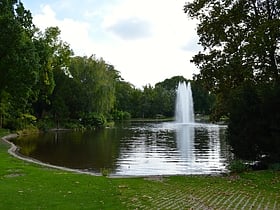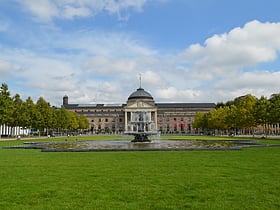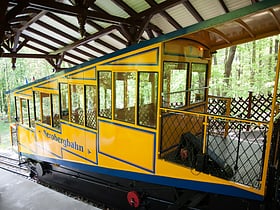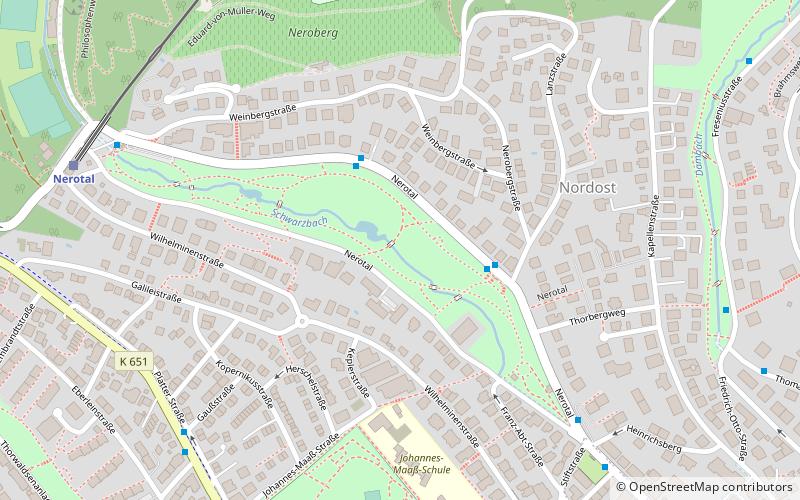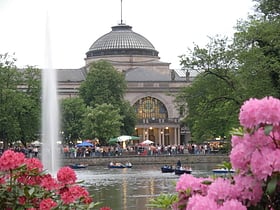Wiesbaden: Park
Places and attractions in the Park category
Categories
More categoriesWarmer Damm
The Warmer Damm is a public park in the centre of Wiesbaden, Germany, stretching from the Wilhelmstraße to the southern borders of the Kurpark and lying immediately in front of the Hessian State Theater.
Bowling Green
The Bowling Green is a park in the Hessian state capital of Wiesbaden. The Bowling Green is of an elongated rectangle with two pools, one of each in the middle of three shells cascading fountain stands.
Neroberg
Historic hill with a funicular and trails Neroberg is a hill in Wiesbaden in Hesse, Germany. It offers a panoramic view of the city and is therefore a tourist destination, reached by the historic Nerobergbahn, a funicular railway from the Nerotalanlagen.
Nerotalanlagen
The Nerotalanlagen is a park in Wiesbaden, Hesse, Germany. The English landscape garden was built in the 19th century in the north of the city, below the Neroberg, along the stream valley of the Schwarzbach creek. The listed historic park features a great variety of plants and several monuments.
Spa Park
Landscaped park with a lake and fountain The Kurpark, German for "Spa Park", is a public park in the centre of Wiesbaden, Germany, stretching from the Wilhelmstraße to the southern borders of the district of Sonneberg and lying immediately behind the Kurhaus convention center.
Tier- und Pflanzenpark Fasanerie
The Tier- & Pflanzenpark Fasanerie is operated by the state capital Wiesbaden and is located outside the city in the northwest in the Wiesbaden city forest on a spacious area of about 23 hectares.
Schlosspark
The Schlosspark Biebrich is a park at Schloss Biebrich in Wiesbaden-Biebrich, Hesse, Germany. First designed as a French formal garden, it was expanded changed to an English landscape garden and expanded 1817 to 1823, the last project of Friedrich Ludwig von Sckell.
Schlosspark Biebrich
The Schlosspark Biebrich is a park at Schloss Biebrich in Wiesbaden-Biebrich, Hesse, Germany. First designed as a French formal garden, it was expanded changed to an English landscape garden and expanded 1817 to 1823, the last project of Friedrich Ludwig von Sckell.
Map

